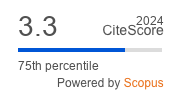Article | Open Access
Asylum Seekers’ Trajectories of Exclusion: An Analysis Through the Lens of Intersectionality
| Views: | 2829 | | | Downloads: | 2769 |
Abstract: The recent increase in asylum seekers in Portugal has drawn attention to the need for effective social integration. The experiences of asylum seekers reveal the existence of social exclusion before migration and the need for them to be included to participate in host societies. This research employs a qualitative methodology, analysed through the lens of intersectionality. In 2021, twenty‐six semi‐structured interviews were conducted with asylum seekers, detailing their trajectories to Europe from their countries of origin in the Global South. The interviews explored their experiences and the reception they encountered in their final or intermediate destinations. The findings indicate that the departures from the countries of origin are associated with contexts of human rights violations—discrimination and persecution due to respondents’ religious, social, ethnic, or sexual orientation. The routes to Europe involved long and perilous journeys by land or sea facilitated by smugglers who charged exorbitant amounts without ensuring protection. The results also reveal that the exclusion asylum seekers experience continues even after requesting international protection in a European country. The findings of this empirical research are important because Portugal has been identified as a safe alternative for the secondary movements of asylum seekers. However, structural issues associated with a struggling welfare state push migrants into new contexts of social exclusion. Our analysis helps to identify trajectories of exclusion among new waves of asylum seekers with implications for decision‐makers and policy actors.
Keywords: asylum seekers; intersectionality; Portugal; social policy
Published:
© Ana Sofia Branco, Romana Xerez. This is an open access article distributed under the terms of the Creative Commons Attribution 4.0 license (http://creativecommons.org/licenses/by/4.0), which permits any use, distribution, and reproduction of the work without further permission provided the original author(s) and source are credited.


